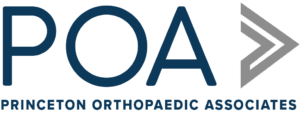
Physician Assistants
Physical & Occupational Therapists
KneeMRI ScansNon-OperativePhysiatry
Physical Therapy
Podiatry
Spine
Sports Medicine
TraumaUrgent Care
X-Ray Imaging

A common back and spine problem is herniated or bulging discs. Nearly everyone will know someone who has experienced a herniated disc at some point in their lives. It's painful and we hope you're one of the fortunate ones who don't have to endure it. In many cases, these discs will heal on their own with no long-term consequences. However, if you have a herniated disc and aren’t able to treat it successfully by yourself, you may need to reach out for professional help from an experienced physical therapist or orthopaedist.
Fortunately, there are several exercises that can ease the pain caused by a herniated disc and strengthen your back to prevent relapses.
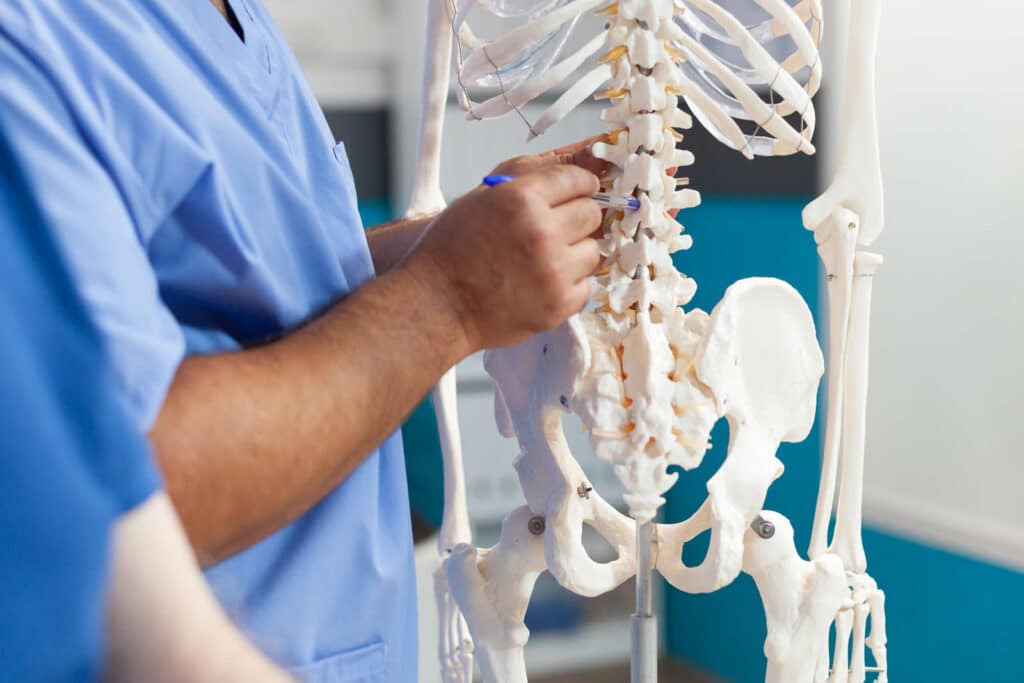
Many people suffering from back pain have weak core muscles. When the core muscles are weak, the spine receives less support. This may be a reason why people with weak core muscles experience back pain more often than those who have a strong core. Core stabilization exercises strengthen the core and make your body less prone to back pain. One of the best exercises to strengthen the core is the pelvic tilts. It should be done in two variants to strengthen your core in different ways. Another exercise that strengthens your core is the bent knee hug. Other exercises that strengthen the core are the bicycle and the knee to chest. Other core stabilization exercises you can try are:
A herniated or bulging disc can lead to muscle spasms in your back. Thus, it’s recommended that you stretch your muscles as often as possible to ease the pain and prevent muscle spasms from becoming chronic. There are many great stretches that you can do to ease the back pain caused by a herniated disc.
The knee to chest is one of the best stretches that you can do on a daily basis. It will help you ease the pain caused by a herniated disc and improve your overall posture. To perform this stretch, you should lie on your back and use your hands to grab one leg by the ankle. Next, you should pull that leg towards your chest and hold this position for 30 seconds. After performing this stretch, you should repeat it with the other leg. This is one of the best knee-to-chest stretches that you can do while dealing with a herniated disc. It will help you ease the pain caused by the condition and improve your overall posture. These are the best exercises that you can do while dealing with a herniated disc. They will help you ease the pain caused by the condition and also improve your posture.
One of the best stretches is the hip stretch. It will help you ease the pain in your back and improve the blood flow to your lower extremities. To perform this exercise, you should lie on the floor and use your arms to pull one leg up towards your head. Next, you should try to reach your hands towards your toes while keeping the other leg on the floor.
Another great stretch is the triceps stretch. You should perform this stretch while standing upright. Then, you should lift one arm towards the sky while keeping the other arm on your side. You should hold this position for about 30 seconds and then perform the same stretch with the other arm. This stretch will help you ease the pain caused by a herniated disc and improve your overall posture.
Finally, the seated hamstring stretch. It will help you ease the pain in the back of your leg and improve your posture. To perform this exercise, you should sit on a chair and place one leg on another. Then, you should try to bend towards the leg that’s on the chair. You should perform this stretch for 30 seconds and then switch legs. These are the best stretching exercises that you can do while dealing with a herniated disc. They will help you ease the pain caused by the condition and also improve your posture.
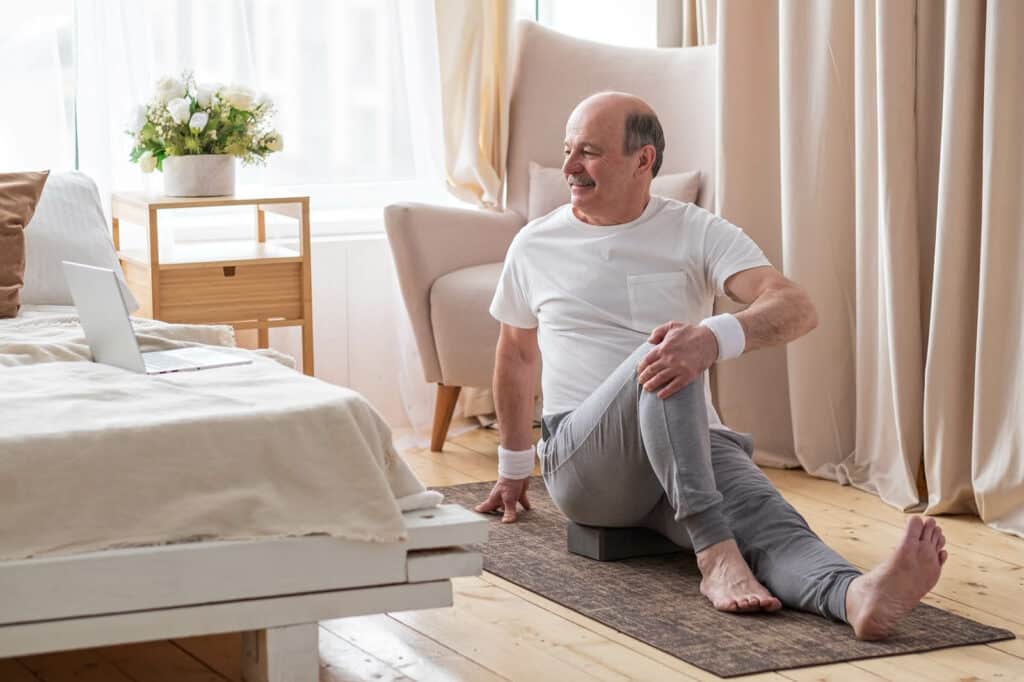
Not all stretching and exercises are created equal, especially when it comes to herniated and bulging disc pain. A lot of folks experience this pain when bending and rotating their body. This ought to tell you that rotational exercises aren't the ones you want to try out. Leg raises are also out since they tend to put a lot of stress on the lower back. You should also avoid sit-ups and a common runner's stretch - toe touches. These will often exacerbate the pain and potentially do more damage to the injured disc.
Of course, gentle stretching and exercising may not be the solution to your herniated or bulging disc problem. Before trying any of these stretches or exercises, you should consult with one of our spine and neck specialists to make sure that you're not doing something which could contribute to future damage. We can begin with physical therapy which may get rid of the issue altogether. If that doesn't work, there are other options including surgery. Your case will be unique so no matter what we encourage you to set up an appointment with us today.
What Is Tibia Fibula Instability? The Causes and Treatment Options
If you lead an active lifestyle and those activities lead you to some of the common and not-so-common sports, you run the risk of an injury to the proximal tibiofibular joint which can lead to an instability. There's a chain reaction of things that can happen as a result and many times it affects the ankle. The ankle joint is a joint between the tibia, fibula, talus and the bones around them. The tibia and fibula are the bones that are next to each other and make up the lower leg. When they're out of alignment, many times due to traumatic sports injuries, issues can arise. The main symptoms of TFI include pain in the front part of your ankle, feeling like you are going to roll your ankle when you take a step, and pain that gets worse when you squat or run downhill.
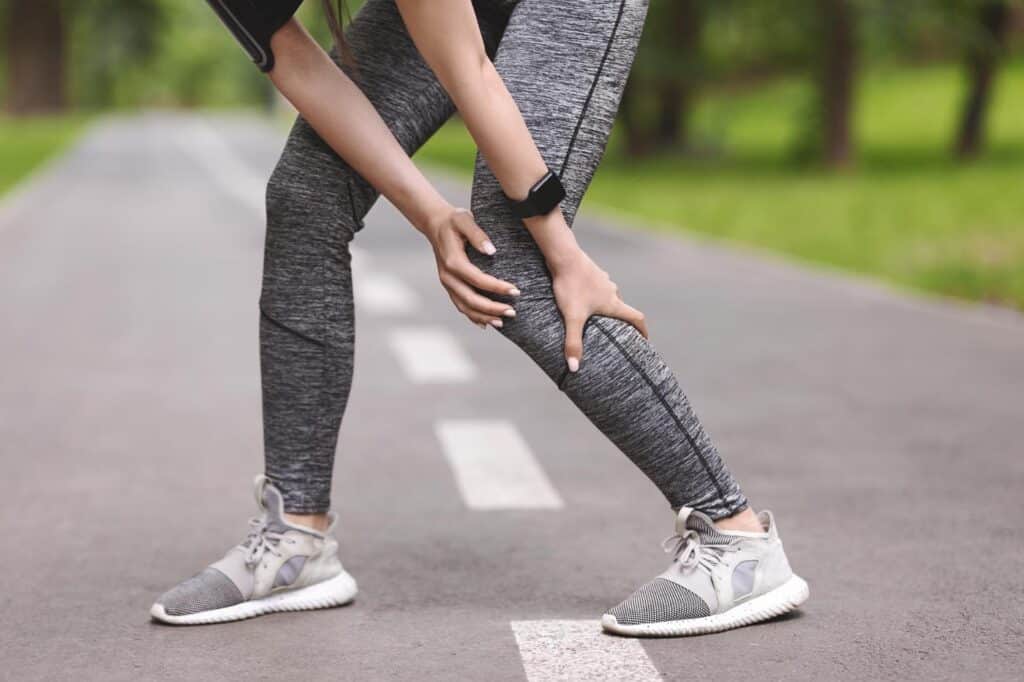
There's risk involved in all forms of exercise and sports so don't let those risks prevent you from leading an active lifestyle. There are far worse effects from not exercising at all than the chance that you hurt yourself on the field or the trail. But still, you want to take care to avoid violently twisting the flexed knee. A blow like that is what tends to result in a TFI. Of course, there are several factors that might lead to an incorrect alignment between the tibia and fibula. The most common cause is the growth spurt. During puberty, there is a sudden increase in the hormones that promote the growth of the bones, which causes the tibia and fibula to grow too fast. If this happens, then the tibia and fibula will no longer be aligned correctly. Another cause is a traumatic accident, such as a car accident. In these cases, one of the bones might break or be fractured, which will cause it to be misaligned and will lead to TFI. Some of the risk factors that might lead to TFI are a history of a broken bone, a family history of TFI, having Ehlers-Danlos Syndrome (EDS), having an unusually short or long leg, or having a leg-length discrepancy.
If you are experiencing pain due to a TFI, schedule an appointment with one of our specialists today. Your case is unique and requires a unique treatment plan. We want to help you walk and exercise without any restriction due to pain for discomfort. Schedule an appointment with us today so we can get you back on the road to pain free walking!
Do you have knee pain when squatting? Do you find it difficult to walk up stairs or stand on your toes?
These are some of the indicators that a person may suffer from Hoffa's Syndrome, or fat pad impingement. Neither one of these names is particularly appealing (Hoffa was the name of the German orthopaedic surgeon for whom the condition is named) and, well... neither is the pain.
Fat pad impingement is a condition where the knee joint presents pain because of inflammation around the aptly named fat pad. It is exactly what it sounds like: a pad of fat behind the kneecap and in between where the femur "connects" to the tibia. It's a little more complicated than that, but that's the gist of it. Impingement of the fat pad can be a result of conditions such as having a bone spur or tight ligaments. Knee fat pad impingement is a common condition that affects many people of all ages and activity levels. If not treated properly, it can lead to long-term complications like arthritis, meniscus tears, and tendonitis.
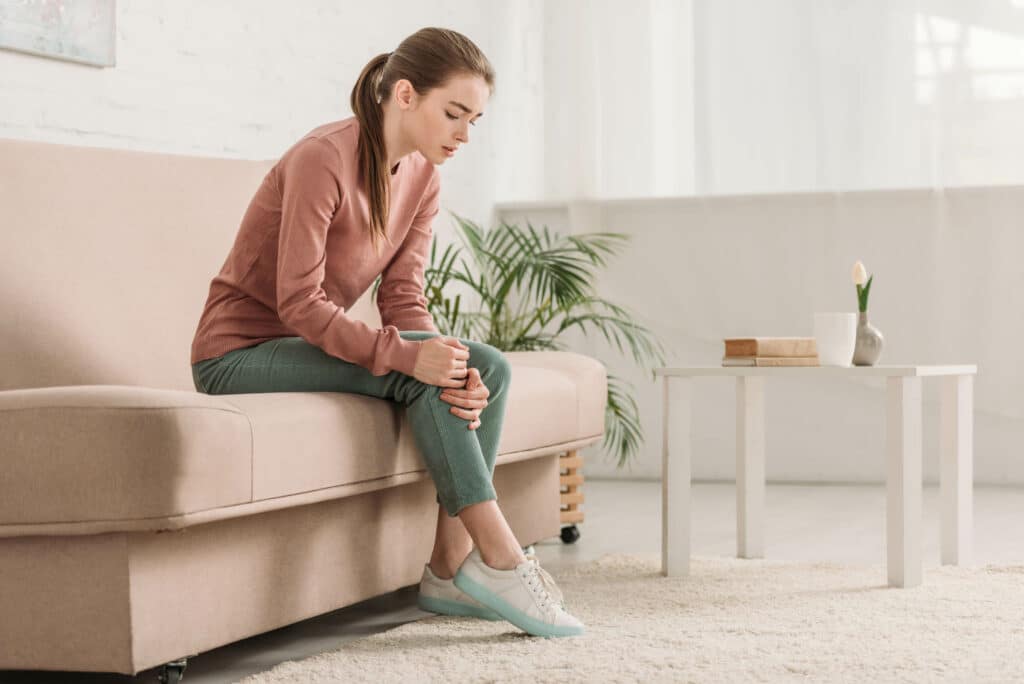
Patellofemoral syndrome is the underlying cause of knee fat pad impingement. The knees are the most commonly used joints in the human body. They take a lot of pressure during daily activities, exercise and even sleeping. Fat pad in the knees is meant to diffuse the pressure. However, if the excess fat pad increases, it may cause knee pain. This is because the pad can press against the kneecap, causing it to rub against the bones and lead to pain. This can also increase your knee joint pressure and make it difficult for you to squat. If you have knee fat pad impingement with patellofemoral syndrome, you may not be able to squat as low as you would ideally like. You may also find it difficult or painful to climb stairs and stay on your toes for a long time.
Squats are one of the best exercises to help manage knee fat pad impingement and patellofemoral syndrome. They work your quadriceps, glutes, and hamstrings. Squats are known to have many benefits, including improving flexibility, reducing risk of osteoporosis, and improving balance and coordination. Not only do squats reduce knee pain, they also help you reduce your risk of developing knee arthritis in the future. They also help you manage patellofemoral syndrome better. Bench squats, front squats, and back squats are the most commonly done squats. Bench squat is done on a bench with your feet on the floor. This is a good exercise for those with knee pain. Front squat is done with the weight in front of your body. It is a good exercise for those with knee pain as it reduces the pressure on the knees. Back squat is done with weight on your back. This is generally recommended for those with little or no knee pain.
High-rep squats are done with a lighter weight and for a higher number of repetitions. They build strength in your quadriceps and glutes. A good way to do them is by adding a small amount of resistance (such as a dumbbell or weight plate). These squats can help you build strength in your quadriceps, quads, and glutes. This in turn can also help you manage patellofemoral syndrome better. Although high-rep squats are not as effective as moderate-rep squats at building strength, they have many other benefits. These include improved flexibility, better coordination, and reduced risk of arthritis.
Knee band exercises can also help you manage patellofemoral syndrome better. This is done by strengthening the muscles around your knees and reducing the excess fat pad. You can do these exercises at home or in the office with a knee band. Some knee bands are pre-stretching and have a unique design that allows you to do knee band exercises. Other knee bands are stretchable and can be worn during activities. Common knee band exercises include knee lifts, squats, and lunges. These exercises can help you strengthen the muscles around your knee and reduce knee fat pad impingement.
Working on building strength--slowly and without overdoing it!--is a great way to manage pain from Hoffa's Syndrome. You can also ice your knees when you feel pain, take over-the-counter anti-inflammatories, and stretch regularly. Be sure to schedule an appointment with us for a correct diagnosis, though, and a bespoke treatment plan so that you don't injure yourself more and so you can recover as quickly as possible.
Shoulder pain is probably the most common physical complaints from people working in an office environment. It’s also one of the most annoying orthopaedic issues you can have simply because it makes tasks like combing your hair or putting on a sweater extremely difficult. Even with regular stretching and exercise, you may find that your neck and shoulder pain continues to get worse.
Neck and shoulder pain are both frustrating mostly because the pain that we experience in this area comes not only from our muscles but also from our posture and how we carry weight.
Let's look at some of the primary causes of this problem, how you can treat it at home, and what you should do if it persists beyond that point.

While many of the causes of shoulder and neck pain are obvious, there are also a few things that you might not realize are causing your discomfort. One of the biggest issues is muscle fatigue and overuse. Your muscles are part of a complex system that helps your body move and function day in and day out. When you overwork those muscles, they become fatigued and strained. They can also develop small tears and micro-tears that cause significant amounts of pain when you try to use them.
Another issue is tight muscles. We’ve all heard that we should stretch, but many of us don’t actually do it. When you ignore your muscles, they can become very tight and overworked. This can put significant strain on your joints and cause them to ache.
One thing we often forget is that sitting is not great for you. That's why many people have moved to using a standing desk. When we talk about the benefits of standing desks, we often focus on how they will help you lose weight and feel more energized. While these are very important benefits, they don’t address the other side of the coin. Standing desks are great because they take the weight off your back and shoulders. When you stand and work, your body has to support its own weight. This takes a significant amount of stress off of your muscles and joints.
When you sit, however, your muscles are forced to work much harder and much more intensely. This can cause significant amounts of stress and pain in your back and shoulders, which is why even if you have a standing desk, you still need to be careful of your posture.
Another source of neck and shoulder pain comes from carrying too much weight on one side of your body. When you’re carrying things around with you all day, you have to put an uneven amount of weight on one side of your body. This can cause serious stress in your hips, shoulders, and neck. It can also cause pain in your knees and ankles. If you’re having problems in one of these areas but can’t pinpoint a cause, you might want to take a look at how you’re carrying your weight. If you’re carrying too much on one side, you could be experiencing significant pain and discomfort as a result. If you carry a heavy bag or purse on one side, that could also cause a lot of pain. If you’re carrying something heavy, try to distribute the weight as evenly as possible.

In addition, bad posture is one of the most common causes of shoulder and neck pain, and it can be difficult to avoid. When you’re sitting, try to keep your shoulders back and your spine straight. When you’re standing, make sure that your weight is evenly distributed and that you’re not bending at the knees or hips. You may be more likely to develop pain if you have very long hours at your desk or if you have a job that requires you to stand for long periods of time. This is because your muscles can become fatigued and strained when you’re in one position for too long.
The most important place to start is at the very beginning which means an evaluation and diagnosis from a doctor. Catching a problem early means a better chance of your issue going away sooner than later. You might be able to treat it with stretching, better posture, and smarter lifting practices. We also have more long-term solutions such as physical therapy or surgery. If you notice symptoms of pain in your shoulders and neck, make sure that you schedule an appointment with us here at POA.
If you experience a muscle strain, it is important to take care of the injury right away. Try some of these home remedies for muscle strain to help speed up the healing process:
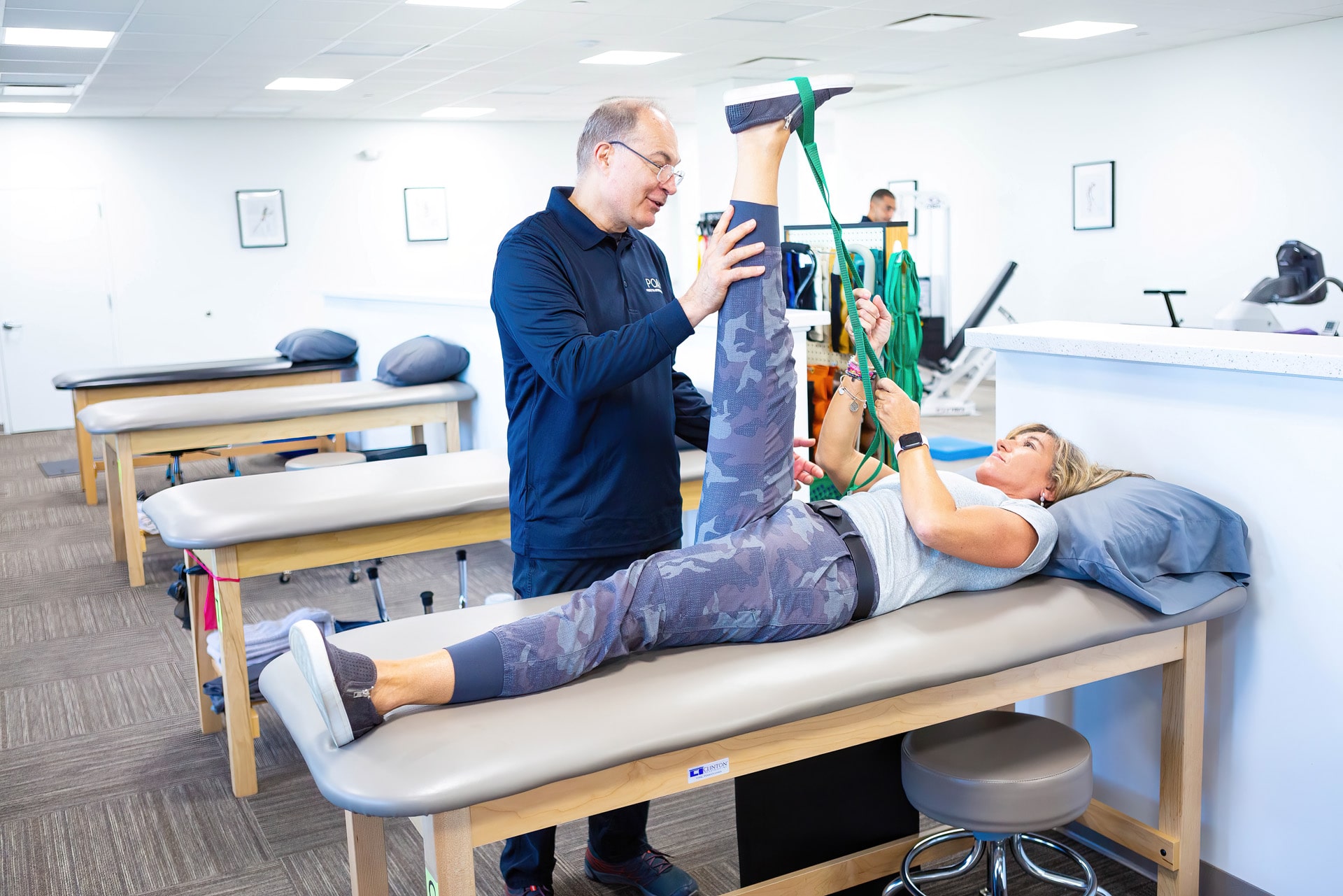
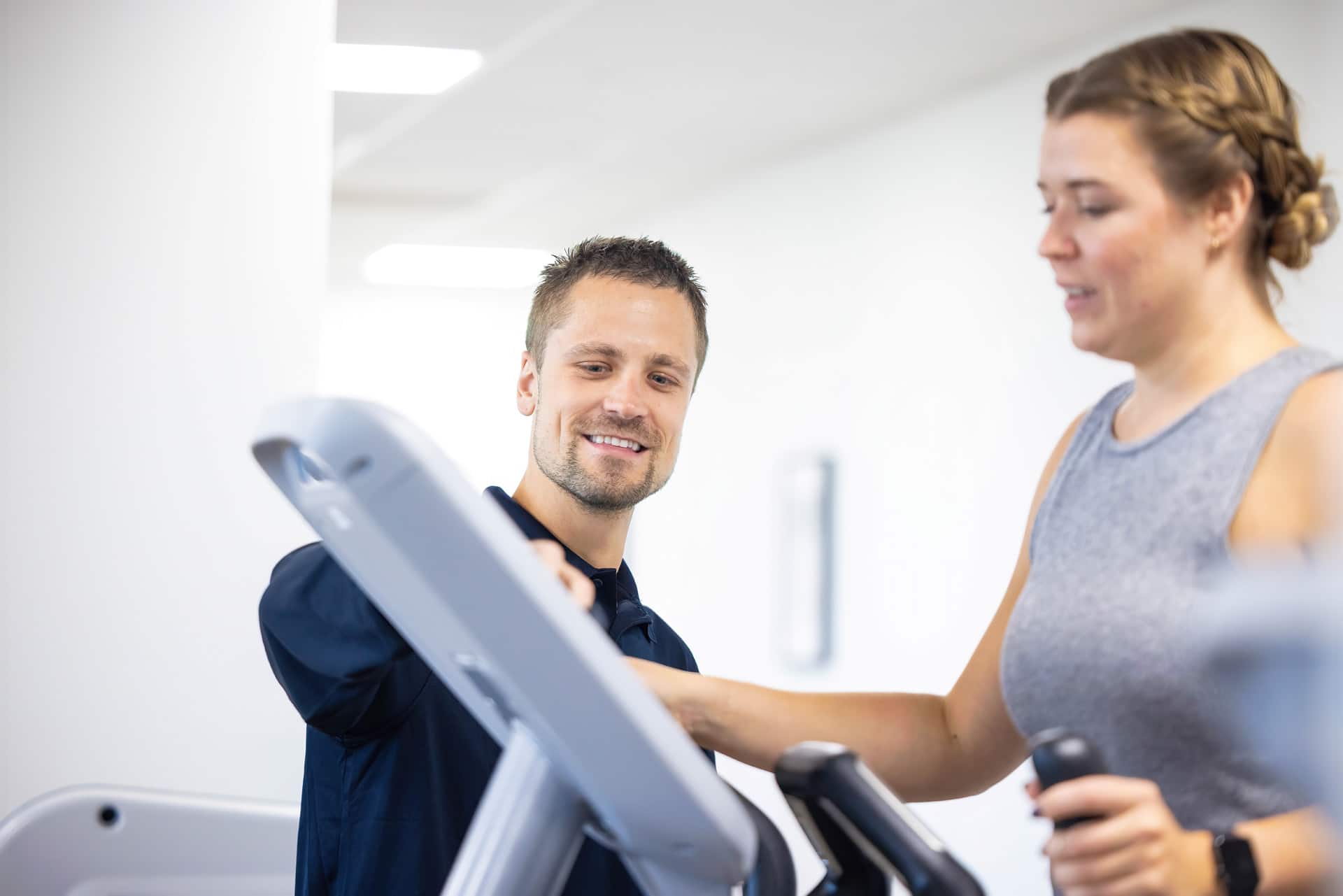
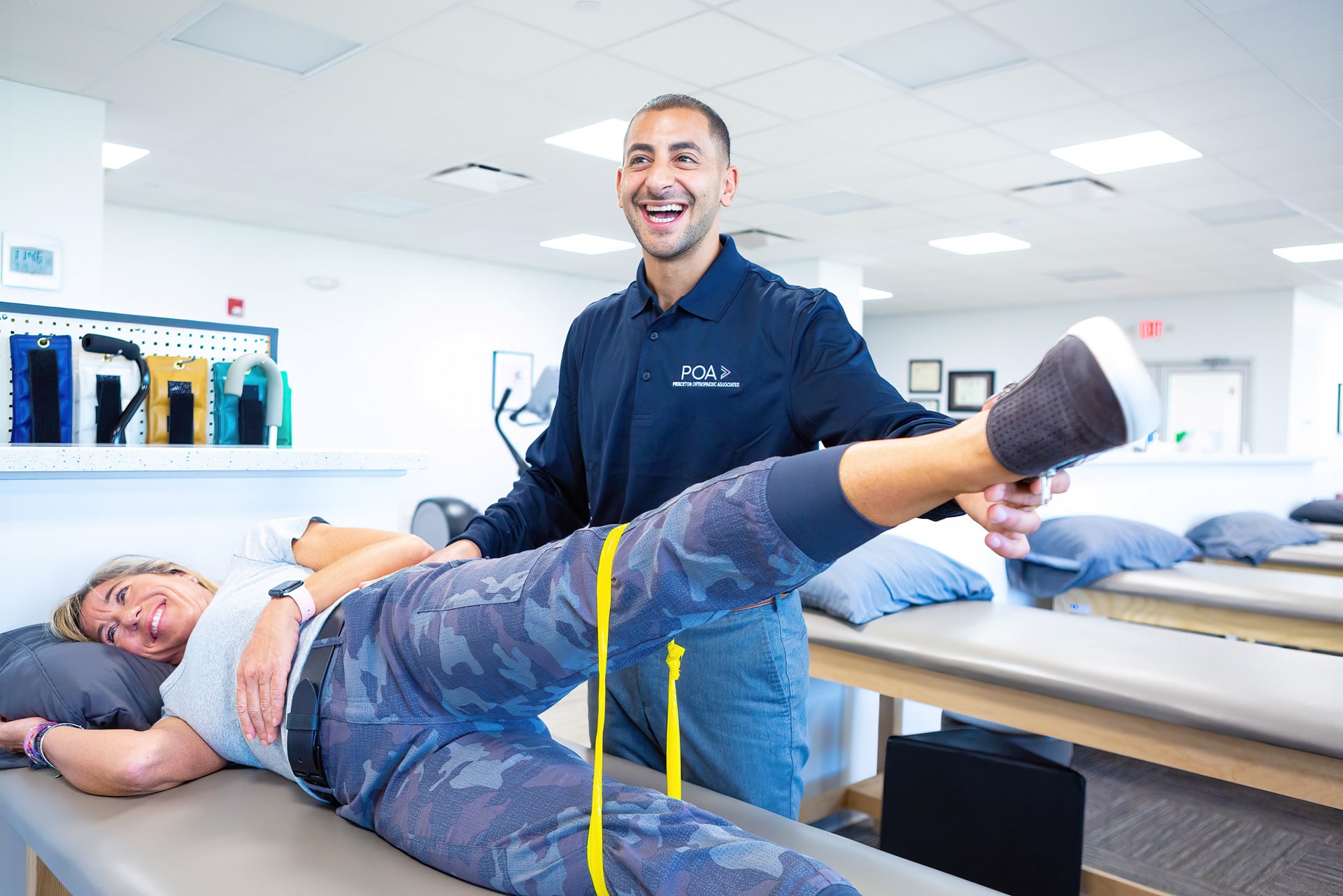
The best way to rehabilitate muscle strains is to try out some rehabilitation exercises. Rehabilitation exercises are used to strengthen the muscles around the injured site and promote healing and prevent future injury. Some of the most common rehabilitation exercises include:
These rehab exercises are designed to help your body heal itself and get back into shape after an injury. Rehabilitative exercises also serve as a preventative measure, which means they can be beneficial in cases where a person has experienced previous injuries or has certain health conditions that make them prone to injuries.
Hello Princeton Orthopaedic Family!
We're excited to announce some changes to our Plainsboro Office which is located in the Medical Arts Pavilion at The Princeton Hospital! We are migrating our Plainsboro Orthopedic Office from the 4th floor to the 1st floor of The Medical Arts Pavillion in Suite 100!
So if you're heading to the Princeton Orthopaedics location in Plainsboro, please go to the 1st Floor, Suite 100 in the Medical Arts Pavilion.
The address stays the same, but the suite number, and the floor have changed! Just remember that we are on the 1st Floor, Suite 100. That address is listed below:
Princeton Orthopaedic Associates
5 Plainsboro Road, First Floor; Suite #100
Plainsboro, NJ 08536
Additionally, with this office migration, the Princeton Orthopaedic Associates team in Plainsboro will be able start offering both Urgent Care and Physical Therapy!

© 2023 Princeton Orthopaedic Associates. The contents of princetonorthopaedic.com are licensed under a Creative Commons Attribution-NonCommercial 4.0 International License. Copying without permission is strictly forbidden.